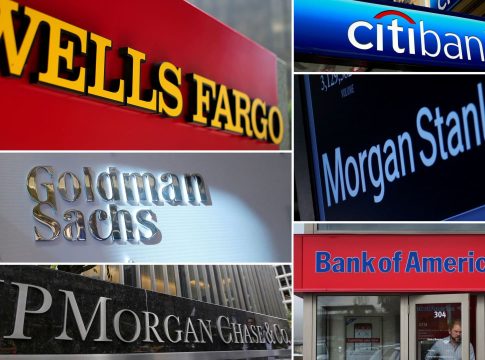Navigating New Waters: The Fed’s Proposed Changes for Big Banks
The Federal Reserve has sparked a significant shift in the financial landscape with its recent proposal aimed at loosening regulations on major U.S. banks. This move is part of the Trump administration’s broader agenda to revise banking regulations put in place after the 2008 financial crisis.
What’s Changing?
At the heart of this proposal is a revision to the enhanced supplementary leverage ratio (ESLR). This set of rules currently applies a uniform capital requirement to all large banks. However, the Fed suggests that each bank should be assessed individually based on its unique mix of assets. This could allow banks such as Goldman Sachs and Wells Fargo to manage their capital more flexibly, ultimately enabling them to lend more and purchase more U.S. government bonds.
The Fed’s Vice Chair for Supervision, Michelle Bowman, champions this change, claiming it will bolster resilience in U.S. Treasury markets and limit future market dysfunctions. She emphasizes the need to address the "unintended consequences" of existing regulations.
The Ripple Effect on Investors
While changes to capital requirements may not yield immediate returns, the proposed updates indicate a softened regulatory stance under Trump, leading to an uptick in bank stock prices. For instance, the Invesco KBW Bank ETF saw a rise of more than 1.5%, continuing its six-day win streak. Stocks like Goldman Sachs and Wells Fargo are also riding this wave.
If banks are allowed to operate with reduced capital reserves, they could redirect resources toward shareholder dividends or increase lending. This flexibility is critical for banks like Wells Fargo, which may expand their investment banking operations or offer larger loans for mergers and acquisitions.
Concerns from Within
Despite the optimism, not everyone is on board with these proposed changes. Some Fed officials, including Governor Adrian Kugler, warn that reducing capital requirements could heighten systemic risks within the banking sector. They argue that this could lead banks to prioritize short-term profits over greater economic stability.
Additionally, Governor Michael Barr suggests that the changes might not substantively improve Treasury market functions, predicting that banks would focus on distributing capital to shareholders rather than enhancing their roles in Treasury intermediation.
Looking Forward
As the Fed rolls out these proposed changes, investors and consumers alike will be watching closely. The balance between encouraging growth and maintaining stability is delicate, and the implications of these regulations will undoubtedly affect both Wall Street and Main Street.
Key Takeaways:
- The proposed changes aim to tailor capital requirements individually for big banks.
- Potential benefits include increased lending and higher shareholder returns.
- Concerns remain over the long-term stability of the banking sector.
In summary, while this move signals a shift toward a more lenient regulatory environment, the outcome remains to be seen, leaving both investors and regular consumers with key decisions to make. Stay tuned as these developments unfold!

Writes about personal finance, side hustles, gadgets, and tech innovation.
Bio: Priya specializes in making complex financial and tech topics easy to digest, with experience in fintech and consumer reviews.

